HR Excellence: Learn from the Best in the Business
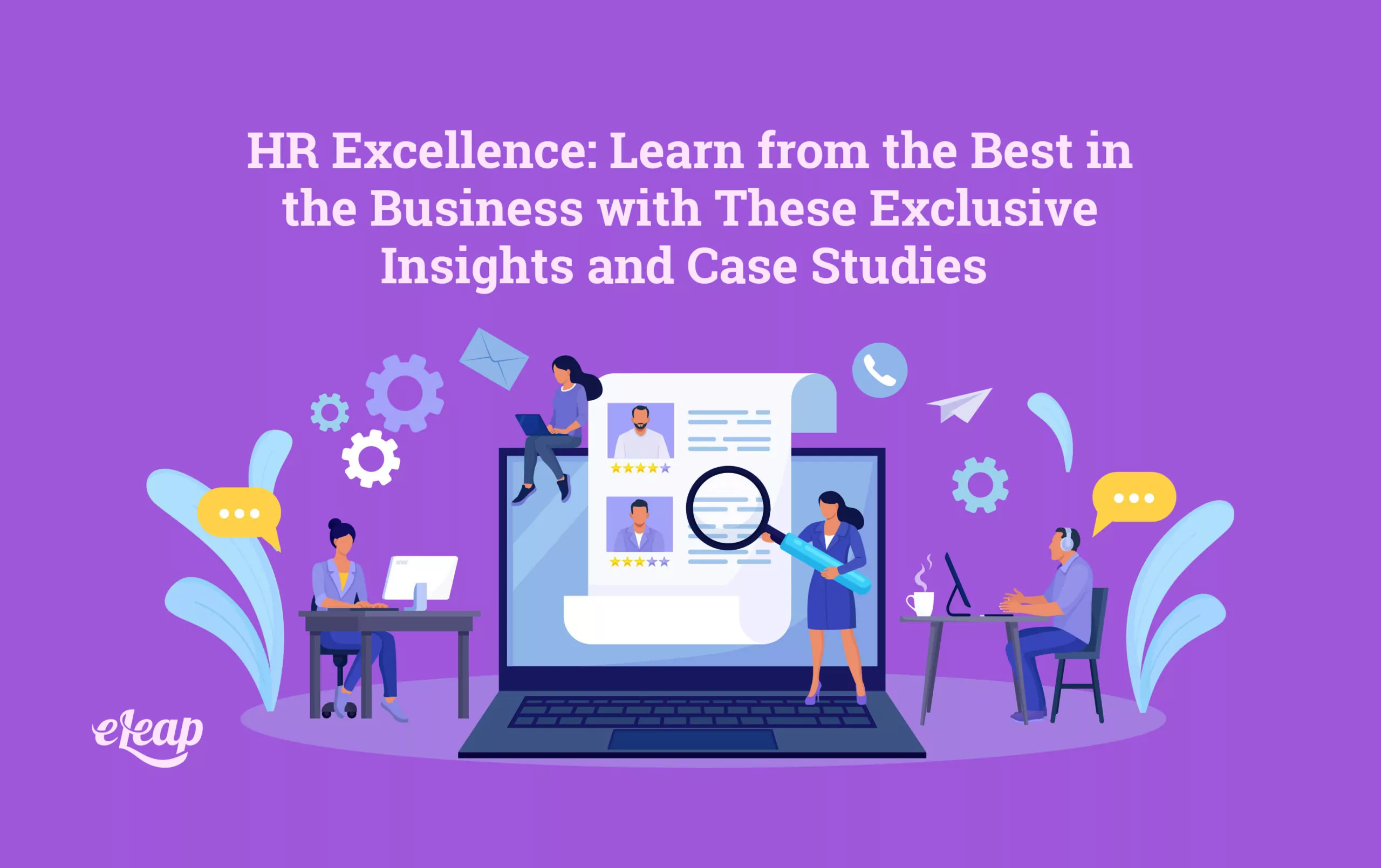
One question often echoes in the corridors of boardrooms: What truly makes an organization excellent? Some might say it’s a strong investment base; others might argue it’s innovation or a strong customer base. Yet, as we delve deeper into the heart of organizational success, another question arises: Who lays the groundwork for all these aspects of excellence? The answer lies within a powerful yet often underestimated force — the Human Resources (HR) department.
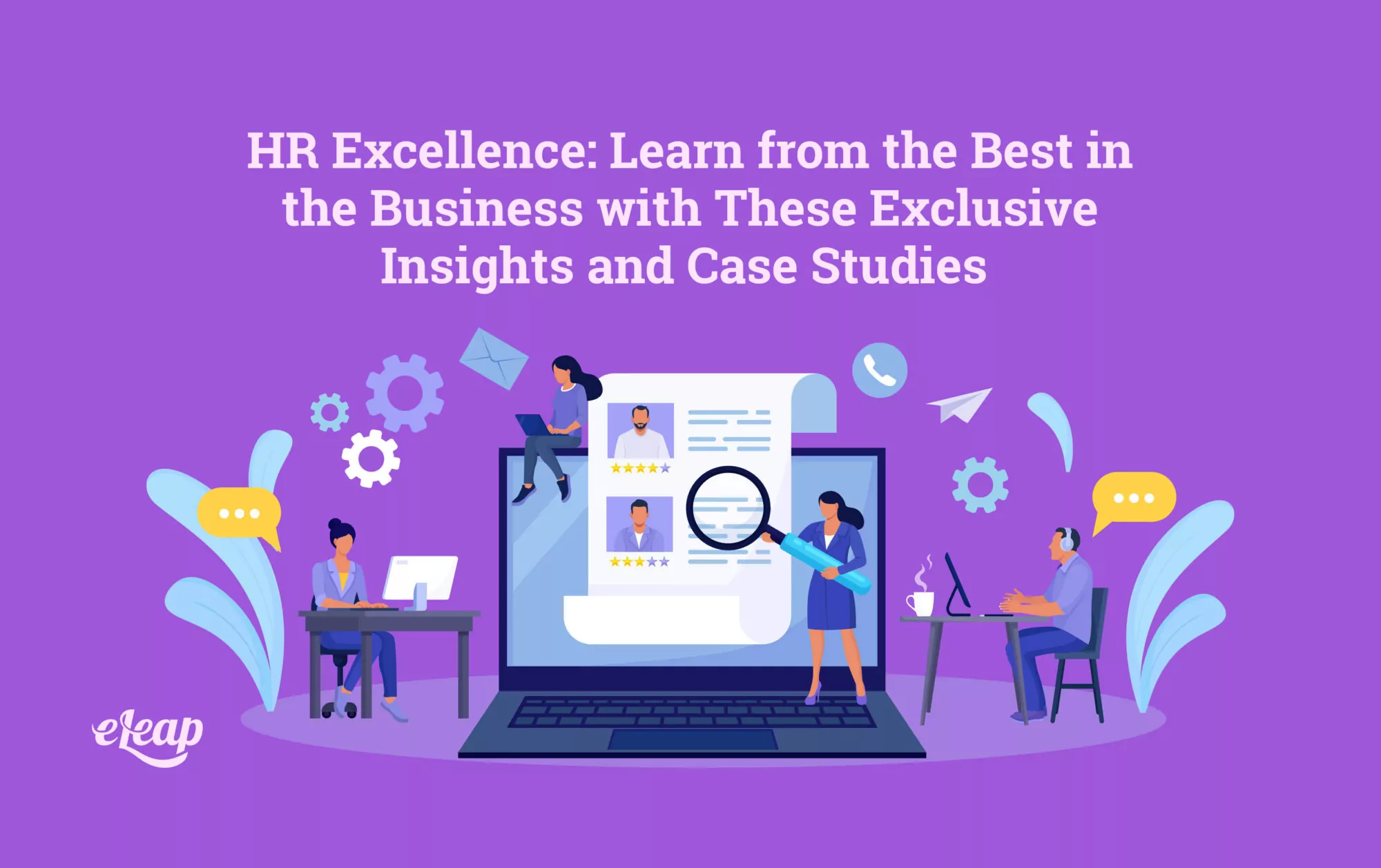
Is it possible that the real driver of organizational excellence is not just the tangible products or services but the people within the organization and how they’re managed? And if that’s the case, how does an HR department achieve a state of excellence that helps propel the entire organization forward?
In the realm of HR, these questions aren’t merely rhetorical. They constitute the very core of a successful business strategy. HR excellence isn’t just about hiring and firing, managing payroll, or even ensuring compliance—it’s about weaving a powerful tapestry of strategy, skills, technology, and a deep understanding of human capital to steer the organization toward its strategic goals.
In this in-depth expose, we turn the spotlight on HR excellence. With insights from leading organizations and pioneering research, we will decode the principles that drive HR success, offering you a roadmap to transform your HR department from a functional unit into a strategic powerhouse. We will dive into the dynamic world of HR, discuss the concept of HR excellence, outline steps to achieve it, and present real-life case studies from organizations that have navigated this journey successfully.
The Concept of HR Excellence
Human Resources (HR) is often seen as the backbone of any organization. In essence, HR success revolves around formulating and implementing HR strategies and practices that lead to superior performance. Organizations with excellent HR practices tend to perform better in productivity, financial outcomes, and quality of work life.
Understanding HR Success
The very foundation of HR excellence lies in its definition. The ongoing commitment to implementing strategic HR practices leads to improved performance, sustainable growth, and a competitive advantage for the organization. It represents an organizational culture that values its workforce, nurtures talent, and invests in a conducive environment for growth and innovation.
However, defining HR excellence is one thing; implementing it is another. It requires a comprehensive understanding of the organization, its culture, strategic goals, and the tools needed to align HR practices with these goals.
The Effect of a Successful HR
The role of HR in an organization is multifaceted. It involves not only the strategic alignment of HR practices but also a continuous commitment to innovation, employee engagement, and diversity and inclusion. It’s about creating an environment that values the unique contributions of all employees and fosters a sense of belonging.
A dedicated and successful HR department can influence the organization in the following ways:
- Organizational Performance: By strategically aligning HR practices with business objectives, organizations can boost productivity, reduce turnover, and improve overall performance.
- Employee Engagement and Satisfaction: Organizations committed to HR growth tend to have higher employee engagement and job satisfaction levels, leading to reduced turnover and enhanced productivity.
- Innovation and Growth: A culture of HR excellence encourages innovation by creating an environment where employees feel valued and supported in their efforts to innovate and grow.
- Talent Attraction and Retention: Organizations committed to HR success can attract and retain top talent.
Building Blocks of HR Excellence
A successful HR department can be built on several key components. Let’s look at these in more detail:
- Leadership: Leadership plays a critical role in fostering a culture of success in HR. Leaders need to articulate a clear vision for HR and actively support implementing HR best practices.
- People-Centric Approach: At its core, HR excellence is about people. Organizations should adopt a people-centric approach that values and supports the unique contributions of all employees.
- Strategic Alignment: HR practices must align with the organization’s strategic goals. This requires a deep understanding of the organization’s vision, mission, and strategic objectives.
- Continuous Learning and Innovation: HR success is not a one-time achievement but a continuous journey. Organizations must commit to ongoing learning, development, and innovation in their HR practices.
- Metrics and Evaluation: Regular measurement and evaluation of HR practices are crucial to ensure their effectiveness and identify improvement areas.
HR Excellence is more than a concept – it’s a culture and a mindset. It’s a commitment to making the organization a great workplace, fostering a culture of continuous improvement, and aligning HR practices with the organization’s strategic goals. By striving for HR success, organizations can enhance their performance, engage and retain their employees, foster innovation and growth, and gain a competitive advantage.
Case Study: Salesforce’s HR Services Excellence

Salesforce has received numerous accolades for its HR practices, including being regularly listed in Fortune’s “100 Best Companies to Work For.” Salesforce’s success doesn’t just stem from its technological innovation but also from its commitment to providing excellent HR services. Its strategies include:
● Understanding Business Needs
Salesforce’s HR team starts by understanding the business’s needs. The team works closely with business leaders to understand the company’s strategic direction and ensure their HR practices support these goals. Salesforce’s HR strategy is built around its corporate culture, encapsulated in its core values—Trust, Customer Success, Innovation, and Equality.
● Strategic HR Planning
Salesforce HR has integrated strategic planning into its function. The team continually anticipates and plans for future workforce needs, from identifying skill gaps to preparing for leadership succession. Their strategic HR planning emphasizes diversity and inclusion, aligning with their core value of Equality.
● Effective Talent Management
The company’s talent management strategy is a crucial part of its HR practices. It places a strong emphasis on attracting and retaining the best talent. They offer competitive compensation, benefits packages, and a robust employee development program. Salesforce also recognizes employees’ achievements and provides various avenues for career progression.
● Employee Experience and Engagement
Salesforce puts a lot of focus on employee experience and engagement. They ensure that the employee journey, from onboarding to development to exit, is positive and meaningful. Salesforce also encourages employee feedback through regular surveys and has mechanisms in place to act on this feedback.
● Data-Driven Decision Making
Salesforce’s HR team uses data analytics extensively for decision-making. They leverage HR analytics to measure the effectiveness of their HR practices and to gain insights into trends and patterns. This data-driven approach allows Salesforce to be proactive in its HR strategies and practices, leading to better outcomes.
The Impact of Salesforce’s HR Success
Salesforce’s commitment to HR service excellence has had significant positive impacts. The company has seen improved employee engagement, reduced turnover, and increased productivity. Its excellent HR services have also enabled Salesforce to attract and retain top talent, giving them a competitive edge.
Salesforce’s HR success hasn’t just improved its HR function – t’s also contributed to the company’s overall success. As a testament to their effective HR practices, the company has seen consistent business growth and is widely recognized as a great workplace.
Its HR practices are a compelling case study for other organizations seeking HR service excellence. It demonstrates how a strategic, people-centric, and data-driven approach to HR can lead to improved organizational performance and a positive work environment.
How to Achieve HR Excellence
Having a functional HR is a strategic and thoughtful process requiring commitment from all levels of the organization. Here, we will expand on the process and discuss relevant stories and studies that exemplify each step.
Tip 1 — Evaluate Current HR Practices
The first step is to assess your current HR practices. This could involve a comprehensive HR audit, which helps identify gaps in your HR function and opportunities for improvement.
Understanding HR Audits
An HR audit comprehensively reviews current human resources policies, procedures, documentation, and systems. This process helps identify needs for improvement and enhancement of the HR function, as well as ensuring compliance with ever-changing rules and regulations.
Typically, an HR audit will examine areas such as:
- Recruitment and Selection: How effective are your recruitment processes? Are they attracting the right kind of talent? Is there bias in the selection process?
- Compensation and Benefits: Are your pay scales competitive? Are benefits attractive and in line with what competitors are offering?
- Training and Development: Are employees being offered opportunities for professional development? Are training programs effective and aligned with business needs?
- Performance Management: How are employees evaluated? Is the system fair and transparent?
- Compliance: Is your company compliant with all relevant labor laws and regulations? Are employee rights adequately protected?
- Workplace Culture: Is there a high level of employee satisfaction and engagement? Are diversity and inclusion actively promoted?
Process of Evaluation
An HR audit may include the following steps:
- Review of Documentation: This includes reviewing company policies, employee handbooks, job descriptions, performance appraisal forms, and other HR-related documents.
- Interviews and Surveys: These can gather qualitative employee data about their experiences and perceptions.
- Observation: HR auditors may observe various HR processes and interactions to understand better how HR policies are implemented.
- Analysis: The data gathered is then analyzed to identify trends, gaps, and areas for improvement.
Case Studies
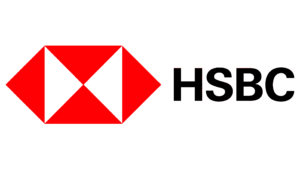
HSBC, a multinational banking and financial services organization, realized the importance of revisiting its HR practices as part of its growth strategy. They embarked on a comprehensive HR audit that revealed a need for improved talent management strategies, especially regarding succession planning and leadership development.
The results of the audit led to the launch of a global leadership program, which was aimed at developing a strong pipeline of leaders within the organization. This not only addressed a critical gap identified in the HR audit but also helped HSBC gain a competitive edge in the market.

Starbucks is another critical example. The company, recognizing a lack of diversity in its leadership team, initiated a comprehensive evaluation of its HR practices. They identified areas hindering the promotion of diverse leaders, such as unconscious bias and lacking diverse talent in the leadership pipeline. This evaluation helped Starbucks to strategize and implement changes in its HR practices to improve diversity and inclusion at all levels.
Evaluating current HR practices through an HR audit is a proactive step toward HR success. It provides a clear, objective overview of where you stand and the areas you need to improve. It can be a stepping stone for a strategic action plan that not only bridges the gaps in the HR function but also aligns it more closely with the organization’s objectives. Regular audits can ensure that your HR department continues to evolve and improve, adding value to the organization and contributing to its overall success.
Tip 2 — Align HR Strategies with Business Goals
Aligning HR strategies with business goals is a crucial step in achieving HR success. This alignment allows the HR function to contribute more effectively to the organization’s success by ensuring people management strategies are geared towards achieving business objectives.
The Importance of Alignment
Alignment between HR strategies and business goals is crucial because people are at the core of any business. HR plays a significant role in attracting, developing, and retaining the talent that drives business outcomes. When HR strategies are aligned with business goals, they can help the organization leverage its human capital to achieve those goals more effectively.
The Process of Alignment
- Understand Business Goals: The first step towards aligning HR strategies with business goals is understanding the business’s strategic objectives. What are the company’s long-term goals? What are the key performance indicators (KPIs) for the business?
- Identify HR contributions: Once the business goals are clear, HR must identify how they can contribute to these goals. This could involve attracting new talent, developing employees’ skills, or retaining key personnel.
- Develop HR Strategies: After identifying how HR can contribute to the business goals, HR can develop strategies to meet these objectives. For instance, if a business goal is to enter a new market, HR may need to create a strategy for attracting and retaining talent with expertise in that market.
- Measure and Adjust: Once the HR strategies have been implemented, it’s crucial to measure their effectiveness and adjust them as needed. This can be done by monitoring HR metrics that align with the business goals.
The Power of Alignment
Aligning HR strategies with business goals allows the HR function to contribute more strategically to the organization. This alignment can improve business outcomes, including increased profitability, enhanced competitive advantage, and a more engaged and productive workforce.
In summary, aligning HR strategies with business goals is a powerful step toward HR success. It enables the HR function to add strategic value to the organization, enhancing the effectiveness of the people management function and contributing to the business’s overall success.
Case Study
![]()
The global healthcare company Novartis provides an excellent example of aligning HR strategies with business goals. When the company decided to focus more on innovation, it realized it needed to attract and retain employees with cutting-edge skills and a passion for innovation. The HR team responded by developing a suite of HR strategies to foster an innovative culture, including new hiring processes, training programs, and performance management systems.
As a result, Novartis was able to effectively attract exceptional talent and foster a culture of innovation within the company. This HR strategy aligned with the business goal of promoting innovation has helped Novartis stay at the forefront of its industry.
Tip 3 — Develop HR Capabilities
Developing HR capabilities essentially means enhancing the skills, competencies, and knowledge of your HR team. This is critical for achieving a functional human resources department as it equips your HR professionals with the tools to drive strategic initiatives, manage change, and contribute effectively to business outcomes.
Understanding HR Capabilities
HR capabilities refer to the skills and competencies an HR professional or department has to manage human resources and contribute to business success effectively. They can include a wide range of areas such as strategic thinking, leadership skills, interpersonal communication, analytical skills, and technical HR knowledge (e.g., understanding labor laws, HR systems, and recruitment strategies).
Why Developing HR Capabilities is Important
HR capabilities are a crucial determinant of the effectiveness of the HR function. Skilled and competent HR professionals can contribute significantly to business outcomes by driving strategic HR initiatives, managing talent effectively, and creating a positive workplace culture.
Developing HR capabilities is also essential for the HR function’s credibility within the organization. When HR professionals demonstrate strong capabilities, they are more likely to be viewed as strategic partners by business leaders.
How to Develop HR Capabilities
- Training and Development Programs: Implement comprehensive training programs for your HR team. This could include workshops, online courses, seminars, and certification programs.
- Mentorship and Coaching: Pair less experienced HR professionals with seasoned mentors who can provide guidance, share experiences, and help them navigate the organization.
- Cross-Functional Experience: Provide opportunities for HR professionals to gain experience in different business areas. This can broaden their understanding of the business and enhance their ability to contribute strategically.
- Encourage Continuous Learning: Promote a culture of continuous learning within the HR team. This could involve encouraging HR professionals to attend conferences, read relevant books and articles, or participate in professional HR networks.
- Provide Feedback and Recognition: Regular feedback can help HR professionals identify areas for improvement and develop their capabilities. Recognition for good work can also motivate them to continue developing their skills.
Case Studies

Deloitte, a global professional services firm, strongly commits to developing HR capabilities. They have a structured training program for their HR professionals, which includes technical training, soft skills development, and leadership training. They also provide opportunities for HR professionals to gain cross-functional experience and encourage continuous learning through Deloitte University. This investment in HR capability development has contributed to Deloitte’s reputation for HR excellence.

Globally recognized professional services firm, PwC, offers a compelling testament to the impact of investing in HR capabilities. With an unwavering commitment to fostering the growth of its HR team, PwC has instituted comprehensive learning and development programs. These programs, meticulously designed, provide robust training covering technical acumen and interpersonal skills. This strategic investment in developing HR capabilities has significantly bolstered PwC’s standing as an exemplar of HR excellence, instrumental in their continued success.
Tip 4 — Measure and Improve
The process of achieving HR excellence is iterative, and measurement plays an indispensable role in this process. Regularly reviewing HR practices, collecting data, and utilizing that data to make informed decisions not only ensures that HR services stay relevant and effective but also facilitates continuous improvement.
The Importance of Measurement
Measurement is the cornerstone of improvement. It allows HR to assess the effectiveness of its practices and policies objectively, understand the impact on the organization, and make data-driven decisions.
Key HR Metrics
Several key HR metrics can provide valuable insights, including:
- Turnover Rate: High turnover can be a sign of dissatisfaction among employees and can lead to increased recruitment and training costs.
- Time to Fill: This measures how long it takes to fill an open position. A longer time to fill could indicate problems with your recruitment processes.
- Employee Engagement: Engaged employees are more likely to be productive and stay with the company. Low engagement levels could be a sign of problems with your workplace culture.
- Training Effectiveness: This measures how well your training programs are working. Low effectiveness could mean that your programs need to be updated or changed.
- Cost per Hire: This measures the cost of recruiting a new employee. High costs could indicate inefficiencies in your recruitment process.
Improving Based on Measurement
Measurement provides data, but the data is useless unless it is acted upon. It’s essential to analyze the data, identify trends, and use this information to drive improvements. This could involve changing HR policies, implementing new programs, or retraining HR staff.
The Cycle of Continuous Improvement
The “measure and improve” process should be ongoing. It’s not enough to measure once and make changes. Regular measurement allows for continuous improvement and helps ensure that HR practices evolve with the needs of the business and its employees.
Case Study
![]()
Johnson & Johnson, a multinational corporation, is known for effectively using HR metrics. They regularly measure various HR practices and use this data to drive improvements. For instance, they discovered through their metrics that they were losing high-potential employees at a higher rate than they were comfortable with. In response, they implemented a new talent management strategy that involved more targeted development programs for high-potential employees. As a result, they significantly reduced turnover among this group.
In essence, the “measure and improve” process allows HR to prove its value and effectiveness, adjust strategies as necessary, and enhance overall performance. Continuous evaluation and improvement lie at the heart of HR excellence, ensuring the HR function remains agile, relevant, and a strategic partner in the organization’s success.
Tip 5 — Incorporate Technology
Incorporating technology into HR practices can streamline processes, provide valuable data, and improve employee experience.
The Role of Technology in HR
In today’s digital age, technology is an essential tool for any HR department. From recruiting and onboarding to payroll and performance management, almost every aspect of HR can be enhanced with technology. Technology can help streamline processes, reduce errors, and free up HR professionals to focus on more strategic tasks.
Implementing HR Technology
There are several ways in which technology can be incorporated into HR practices:
- HR Information Systems (HRIS): An HRIS is a software application that can manage various HR tasks such as payroll, benefits administration, and time tracking. It can help automate routine tasks and improve efficiency.
- Applicant Tracking Systems (ATS): An ATS can streamline the recruitment process by automating the tracking of job applications, screening of resumes, and scheduling interviews.
- Performance Management Systems: These systems can help manage the performance review process, track employee goals, and provide analytics to help make informed decisions about promotions and raises. Use the eLeaP People Success Platform which features a powerful performance management system as an example of how to advance your PMS objectives.
- Learning Management Systems (LMS): An LMS can provide online training programs to employees, track their progress, and provide reports on training effectiveness. A good example is eLeaP Learning Management Platform LMS.
- Employee Self-Service Portals: These portals allow employees to access and manage their HR-related information, such as benefits, payroll, and time off requests. This can improve employee satisfaction and reduce the administrative burden on HR.
Case Studies
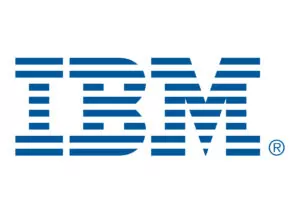
IBM provides an excellent example of the incorporation of technology into HR. In recent years, IBM has transformed its HR function through artificial intelligence (AI), data analytics, and digital tools.
IBM’s AI platform, Watson, is used in several HR applications, such as career coaching, personalized learning recommendations, and candidate screening. The company also uses data analytics to predict employee performance and attrition, which has helped them make more informed decisions about talent management.
This incorporation of technology has helped IBM improve the efficiency of its HR function, provide better service to employees, and contribute more strategically to the business.
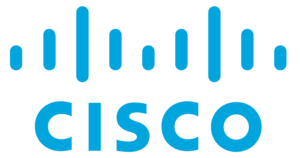
Another company, Cisco Systems, a leading IT and networking firm, transformed its HR function by incorporating technology. They developed an AI-powered tool called “The Accompany” that provides data-driven insights to their HR team, helping them make more informed decisions. This technology adoption has dramatically improved the effectiveness of Cisco’s HR function.
Incorporating technology is a crucial step toward HR success. It can help HR departments operate more efficiently, provide better employee service, and strategically contribute to business outcomes. However, it’s important to remember that technology is a tool, not a solution in itself. It must be used wisely, in conjunction with effective HR policies and practices, to drive HR excellence truly.
Achieving HR excellence is not a simple task – it’s a strategic and continuous journey. However, by evaluating current practices, aligning HR strategies with business goals, developing HR capabilities, regularly measuring and improving, and incorporating technology, organizations can make strides toward HR success. These steps, underpinned by relevant stories and research, demonstrate the path to HR excellence and its potential to transform not just the HR function but the entire organization.
Challenges to HR Excellence
Despite the clear benefits, achieving HR excellence is not without challenges. Some of the significant obstacles include resistance to change, lack of skilled HR professionals, poor leadership, and limited resources. Overcoming these challenges requires strong leadership, effective change management strategies, and investment in HR capabilities.
Future Trends in HR Excellence
In today’s rapidly evolving world, HR excellence isn’t just about being effective now – it’s about staying one step ahead, ready to tackle the challenges and opportunities of the future. It’s about anticipating trends and leveraging them to drive better business outcomes. Here, we look at some future trends that will shape HR excellence.
1. Greater Emphasis on Employee Experience
In recent years, there’s been a growing focus on employee experience – the total of all employee interactions with their employer. Research has linked a positive employee experience to increased engagement, productivity, and retention. In the future, we can expect HR departments to emphasize employee experience, taking a holistic view of employees’ journey from recruitment to retirement.
For instance, companies may invest more in employee wellness programs, create more flexible work arrangements, or leverage technology to make HR processes more employee-friendly. The goal will be to create a positive, engaging, and meaningful work experience that attracts and retains top talent.
2. Rise of People Analytics
People analytics – using data to drive better decisions about people management – is already a significant trend in HR. According to a 2019 report by Deloitte, an impressive proportion of companies—over 70% – leverage the power of people analytics as a strategic tool to augment their performance. In the future, its importance is set to grow even further. As HR departments access increasingly sophisticated data analytics tools, they can glean deeper insights about recruitment strategies, employee engagement, learning & development effectiveness, and more.
This will allow HR departments to make evidence-based decisions and show the direct impact of their strategies on business outcomes, positioning them as strategic business partners.
3. Leveraging Artificial Intelligence (AI) and Automation
AI and automation are set to revolutionize HR. From automating routine tasks to providing personalized learning recommendations, these technologies offer opportunities to make HR processes more efficient and effective.
According to a publication in the International Journal of Applied Research, titled. “Artificial Intelligence and the Future of HR Practices,” as the reliability and affordability of AI technology improve, its utilization across various sectors is anticipated to grow substantially. It is, therefore, safe to say AI is the future of HR.
For example, AI-powered chatbots can answer employees’ HR-related queries in real-time, freeing HR professionals to focus on strategic tasks. Automated onboarding processes can ensure a smooth and consistent experience for new hires. AI algorithms can analyze job descriptions and performance data to predict which candidates will be successful in a role.
4. Focus on Skills Rather than Jobs
As the pace of change accelerates, the specific skills an employee needs to succeed are changing rapidly. As a result, there’s a growing trend toward focusing on skills rather than jobs. This means hiring and developing people based on the skills they have (or can learn) rather than the job titles they’ve held.
HR departments will need to get better at identifying the skills their organization needs, assessing the skills their employees have, and closing any gaps through targeted recruitment and development initiatives. This will require a sophisticated understanding of the skills landscape, as well as robust assessment and development processes.
5. Increased Remote Work and Digital Collaboration
The COVID-19 pandemic has shown that remote work is possible and potentially beneficial. Many organizations have found that remote work can increase productivity, reduce costs, and improve work-life balance. As a result, we can expect remote work to continue to be common in the future.
This will present new challenges for HR departments. They must find ways to engage, develop, and retain employees who may never set foot in the office. This may require new approaches to everything from performance management to team building.
These trends present both challenges and opportunities for HR departments. By staying ahead of these trends, HR departments can position themselves as strategic, forward-thinking partners that drive business outcomes through effective people management. Achieving HR excellence means not just doing well now but being ready for the future.
Conclusion
As we draw to a close on this comprehensive exploration, it becomes increasingly evident that the pursuit of this objective is not simply a journey but rather a continuous evolution. The HR landscape has undergone a paradigm shift, transitioning from a traditional support function to a crucial strategic partner that significantly impacts the trajectory of an organization’s success.
Throughout this discourse, we have dissected the core principles of HR excellence, from evaluating current HR practices and aligning strategies with business goals to developing capabilities and harnessing the transformative power of technology. Each aspect plays an indispensable role in catapulting HR from its functional cocoon into the strategic limelight.
Furthermore, real-world case studies of industry pioneers such as PwC and Starbucks illustrate the tangible outcomes of investing in HR growth. These organizations have not only excelled in their respective markets, but they have also managed to cultivate an environment that maximizes the potential of their greatest asset – their people.
Yet, as we peer into the future of HR, it’s clear that the journey doesn’t end here. Future trends, including an increased focus on employee experience, the rise of people analytics, greater AI and automation adoption, a skills-centered approach, and the evolution of remote work and digital collaboration, will continue to shape the HR landscape.
HR Professionals
To stay ahead, HR professionals and business leaders must maintain their commitment to continuous learning, evolution, and adaptation. An excellent HR isn’t a destination; it’s a journey that requires dedication, foresight. A keen understanding of the dynamic interplay between people and business strategy.
So, as you embark or continue on this journey, remember – the pursuit of HR excellence is the pursuit of business excellence. In the quest for organizational success. The golden thread that binds all aspects together is the strategic management and nurturing of human capital. Because ultimately, the best businesses are those that understand and value their people. Propelling them from good to great, from successful to excellent.
Thank you for joining us on this exploration. As we part ways, we leave you with the seeds of knowledge and insights gleaned from the best. In the business, hoping they will inspire and guide you in your journey toward achieving HR excellence.